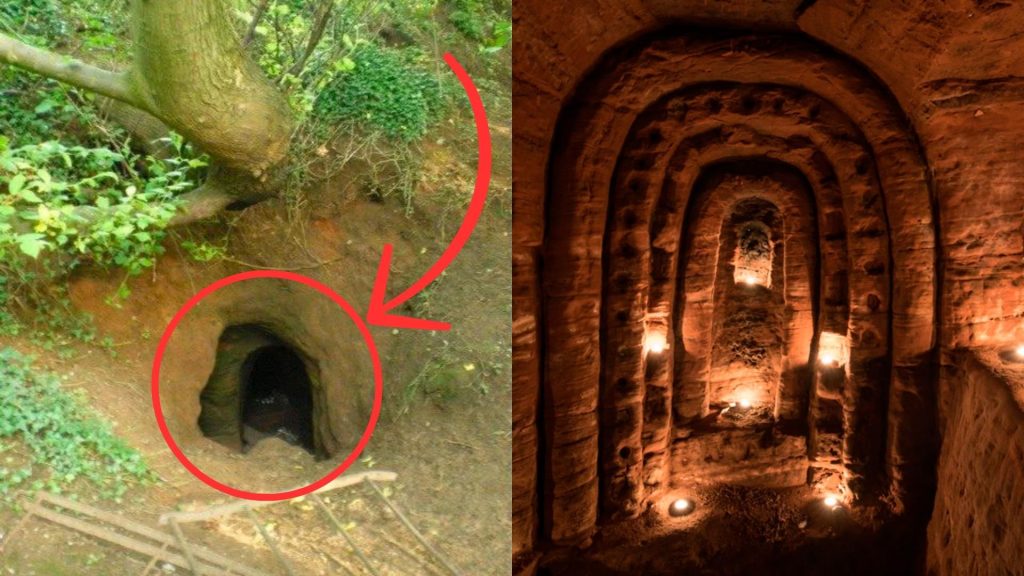In the picturesque fields of Shropshire, England, a peculiar rabbit hole unveils a captivating network of caves that has become the talk of the town. The Caynton Caves, shrouded in mystery, have sparked heated debates about their origin and purpose, leaving the local community intrigued and perplexed.
The Templar Tale

Legend suggests that these underground chambers may have been carved out by the Knights Templar during the 17th century. The Poor Fellow-Soldiers of Christ and of the Temple of Solomon, as they were officially known, sought clandestine meeting places, and the Caynton Caves fit the bill. Established in 1119, the Templars rose to power, only to face persecution and dissolution in the early 1300s, leaving an enigmatic legacy.
Victorian Folly or Ancient Relic?

Contrary to the Templar theory, some argue that the caves are a Victorian-era creation, born from the whimsy of a wealthy landowner around 1850. Follies, architectural curiosities with no apparent purpose, became fashionable in 18th-century Britain, showcasing wealth and creativity. The Caynton Caves, hewn into sandstone, feature chambers, a font, and candle niches, adding layers to the mystery.
Historical Jigsaw: Neo-Norman Features
Historic England lists the site as a “Cave/grotto” from the late 18th or early 19th century. Neo-Norman architectural elements, a style prevalent in the late 19th to early 20th century, raise questions. Were these features added later, or could they be remnants from the caves’ alleged creation in the 17th century? The jigsaw of history perplexes, offering no clear answers.
Templar Legacy and Romanticism

The Templars, armed knights with privileges in the Catholic Church, garnered respect and power during the Crusades. Despite their eventual fall from political grace, the order’s romanticized image endures. In the 21st century, the caves witness eclectic rituals—from pagan celebrations to satanic inscriptions—adding layers of mystique and controversy.
Unveiling the Enigma: Michael Scott’s Encounter

In 2017, Michael Scott, intrigued by an online video, explored the Caynton Caves. His description highlights the hidden nature of this historical treasure, tucked away in a field. The caves, sealed off in 2012 due to disrespectful visitors, continue to attract intrigue, with periodic trespassing marring their sanctity.
The Shropshire Star’s Standpoint

Local newspaper Shropshire Star firmly dismisses the Templar connection, branding the caves as a Victorian-era folly. The seal on the entrance since 2012 underscores the landowners’ frustration with disrespectful behavior, hindering public exploration.
Conclusion: Deciphering the Depths

The Caynton Caves remain an enigma, intertwining history, legend, and contemporary controversy. Whether crafted by Templars or Victorians, their allure persists, drawing both admirers and intruders. The debate lingers, echoing through the chambers of time.


